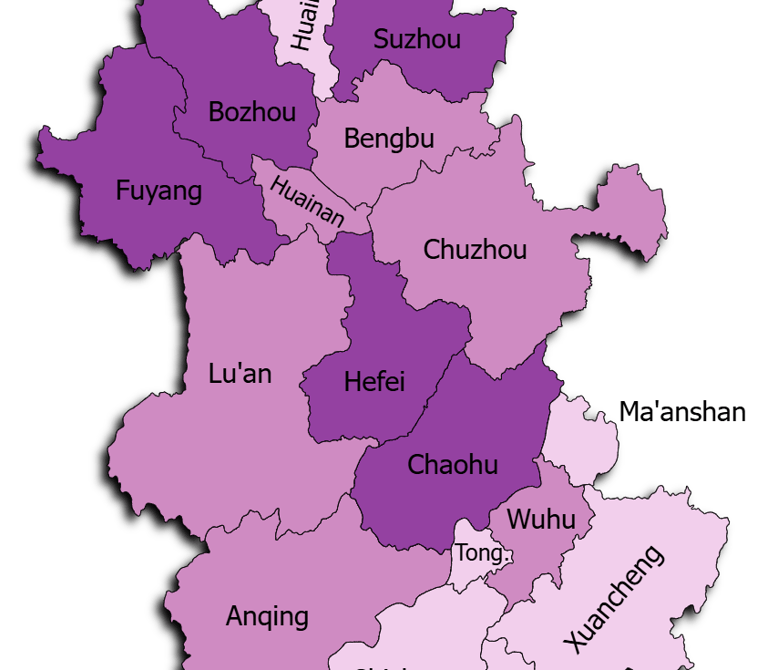Cities in Shaanxi


Introduction
Shaanxi is located in Northwest China and borders Shanxi, Henan, Sichuan, Gansu, Ningxia, and Inner Mongolia. The province includes the Loess Plateau, Qinling Mountains, and Weihe River Basin. Shaanxi is known for its role in Chinese imperial history, archaeology, and cultural heritage, with roots dating back to early dynasties and ancient trade routes.


Xi’an is located in central Shaanxi in the Weihe River Basin. The city has a population of around 13 million and is the provincial capital. It is considered a major historical center with a long record of political, cultural, and intellectual life.
Xi’an is widely known as one of China’s most influential ancient capitals. It holds deep historical significance, serving as the capital for multiple dynasties, including the Qin and Tang dynasties. Xi’an is a symbol of early Chinese state formation, imperial administration, and cultural exchange. The city is associated with the Silk Road, archaeology, and classical architecture. Major institutions such as Xi’an Jiaotong University, Northwest University, and Northwestern Polytechnical University contribute to research in engineering, aerospace, archaeology, and cultural studies.
📍 Main places to visit include Terracotta Army, Ancient City Wall, Giant Wild Goose Pagoda, Bell Tower, Shaanxi History Museum, and Daming Palace Site.
Xi’an (西安)
Baoji (宝鸡)
Baoji is located in western Shaanxi near the Qinling Mountains. The population is about 3 million, and it sits roughly 150 km from Xi’an. The city is often described as a gateway region between the Central Plains and western China.
Baoji is known for its connection to Bronze Age heritage, ancient trade routes, and archaeological discoveries. The area contains important cultural relics that reflect early technological and artistic development. Modern industries include machinery, equipment manufacturing, and materials research, supported by regional technical institutes and research centers.
📍 Main places to visit include Famen Temple, Taibai Mountain, Zhougong Temple, Baoji Bronze Museum, and Longshan National Forest Park.




Weinan is located east of Xi’an along the Weihe River plain. The population is close to 5 million, and the distance to the provincial capital is about 60 km. The city has a balanced character combining agriculture, historical heritage, and expanding industry.
Weinan is associated with ancient Chinese cultural identity, early dynastic history, and preserved historical sites. Agriculture remains significant, supported by irrigation systems and fertile plains. The city also participates in industrial development related to materials processing and mechanical equipment. Universities and cultural centers support regional studies and education.
📍 Main places to visit include Mount Hua, Hancheng Ancient Town, Li Mountain, Tongguan Ancient Pass, and Weinan Museum.
Weinan (渭南)
Hanzhong (汉中)
Hanzhong is located in southern Shaanxi near the Qinling Mountains and river valleys. The city has a population of around 3 million, and the distance to Xi’an is approximately 300 km.
Hanzhong is known for ecology, river basins, and cultural heritage linked to ancient military history. Research in biodiversity and conservation is active.
📍 Main places to visit include Zhang Qian Memorial Hall, Hanzhong Museum, Bailong Lake, and Liuba Ancient Town.
Yan’an (延安)
Yan’an is located in northern Shaanxi on the Loess Plateau. The city has a population of about 2 million and is roughly 350 km from Xi’an. It is often seen as a symbolic city.
Yan’an is known for its historical role in modern Chinese history, particularly as a center of political leadership, revolutionary education, and cultural formation during the mid-20th century. Research institutes and historical archives focus on politics, governance, and cultural heritage.
📍 Main places to visit include Yan’an Revolutionary Memorial Hall, Baota Mountain, Yangjialing Site, and Zaoyuan Site.




Ankang (安康)
Ankang is located in southeastern Shaanxi near mountain basins and river valleys. It has a population close to 3 million and sits about 270 km from Xi’an.
The city is known for mountain ecosystems, cultural heritage, and river landscapes. Research centers focus on ecology and regional studies.
📍 Main places to visit include Xi’anfeng National Forest Park, Han River Scenic Zone, Jinxian Temple, and Yinghu Lake.
Yulin (榆林)
Yulin is located in the northern part of Shaanxi near desert and plateau landscapes. The population is around 4 million, and the city lies about 600 km from Xi’an.
Yulin is known for energy resources, including coal and chemical production, as well as preserved historical defensive sites.
📍 Main places to visit include Great Wall Ruins, Zhenbeitai Fortress, Red Stone Gorge, and Hongshi Canyon Scenic Area.




Navigation
Main Menu
nathan.china-sphere.com
© 2025. All rights reserved.